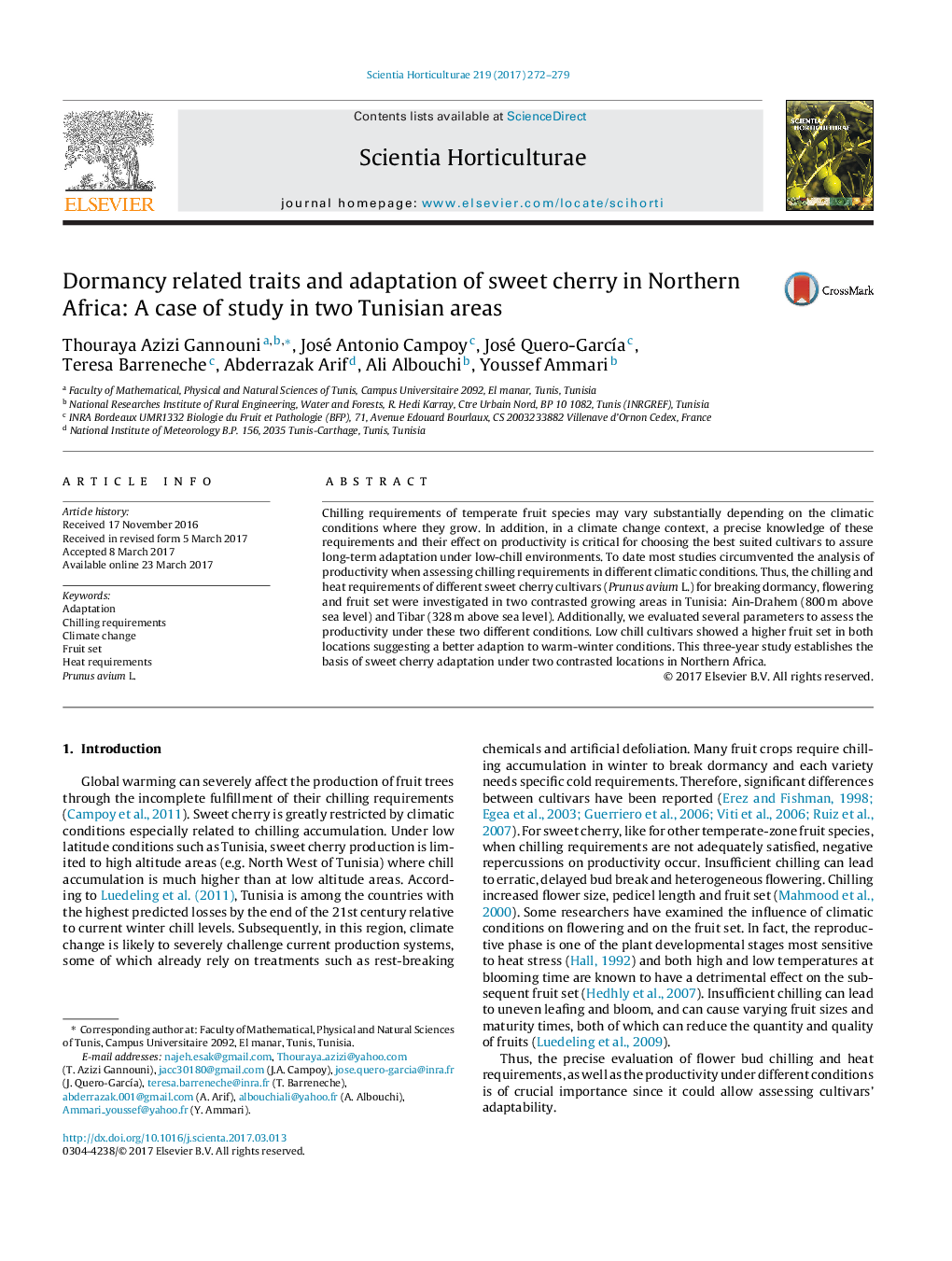| Article ID | Journal | Published Year | Pages | File Type |
|---|---|---|---|---|
| 5769733 | Scientia Horticulturae | 2017 | 8 Pages |
â¢Dynamic model appears to be the best model to use for estimation chilling requirements (CR), especially in Northwest Tunisia (high altitude).â¢As the CRs of cultivars increases, the days from breaking dormancy to 50% flowering (F50) will be reduced.â¢'Sunburst' can be planted anywhere in North Africa with similar climatic conditions.â¢'Bouargoub', the local cultivar, was the earliest with dormancy breaking with the highest fruit set and the lowest CR and was the most adapted cultivar under the Mediterranean conditions.
Chilling requirements of temperate fruit species may vary substantially depending on the climatic conditions where they grow. In addition, in a climate change context, a precise knowledge of these requirements and their effect on productivity is critical for choosing the best suited cultivars to assure long-term adaptation under low-chill environments. To date most studies circumvented the analysis of productivity when assessing chilling requirements in different climatic conditions. Thus, the chilling and heat requirements of different sweet cherry cultivars (Prunus avium L.) for breaking dormancy, flowering and fruit set were investigated in two contrasted growing areas in Tunisia: Ain-Drahem (800Â m above sea level) and Tibar (328Â m above sea level). Additionally, we evaluated several parameters to assess the productivity under these two different conditions. Low chill cultivars showed a higher fruit set in both locations suggesting a better adaption to warm-winter conditions. This three-year study establishes the basis of sweet cherry adaptation under two contrasted locations in Northern Africa.
